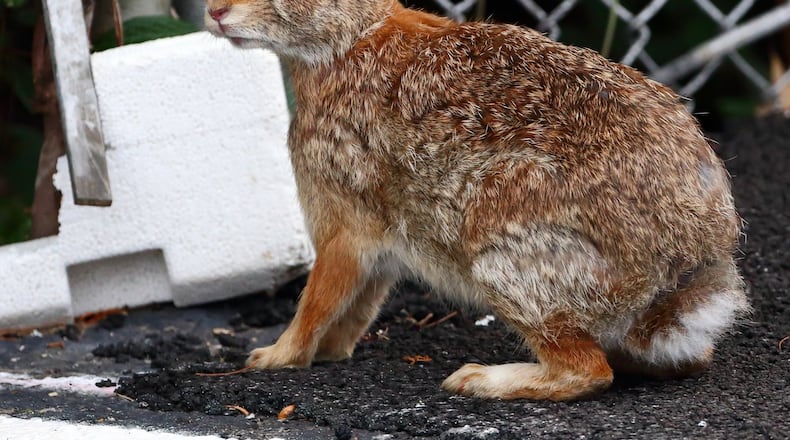An Eastern cottontail rabbit has been hopping about our yard in Decatur nearly every morning and evening. “A cute little thing,” my wife said when she first saw it. Now, she’s not so sure: She found her tomato plants the other day nibbled down to the stems, clearly the work of the rabbit.
Even so, I find joy in having a wild cottontail sharing our urban yard. It has prompted me to give more thought to rabbits, creatures that I don’t often ponder. The Eastern cottontail is the most common and widespread of Georgia’s four rabbit species — the others being the swamp rabbit, the marsh rabbit and the Appalachian cottontail (which occurs at elevations above 3,000 feet).
Collectively, though, all four species are called cottontails. Despite some size differences, they all resemble one another. Even wildlife biologists sometimes have difficulty telling them apart.
All of them are prolific breeders. The Eastern cottontail produces as many as seven litters a year between early February and late September, with 80 percent of the young born from April to July. Male cottontails are polygamous, having more than one mate at a time.
As many as nine 1-ounce baby cottontails are born blind and naked in a ground nest, usually just a depression lined with dry grasses, plant fibers and soft fur from the mother’s breast. It is not uncommon this time of year to come upon a nest with baby rabbits in an old field or a meadow — or even in an urban lawn. If you do, leave it be. The bunnies grow rapidly and leave the nest after about two weeks.
Despite the Eastern cottontail’s seeming abundance, researchers at Georgia College and State University in Milledgeville found in a recent study that the rabbit’s numbers have been declining for at least the past 40 years. Urban sprawl, land use changes and increased predation — including from coyotes — have contributed to the decline in Georgia, they said.
IN THE SKY: From David Dundee, Tellus Science Museum astronomer: The moon will be last quarter on Sunday. Mercury is low in the west just after sunset. Venus rises in the east a few hours before dawn and will appear near the moon on Thursday. Jupiter is low in the west just after sunset. Saturn rises out of the east just before sunset.
About the Author
Keep Reading
The Latest
Featured


